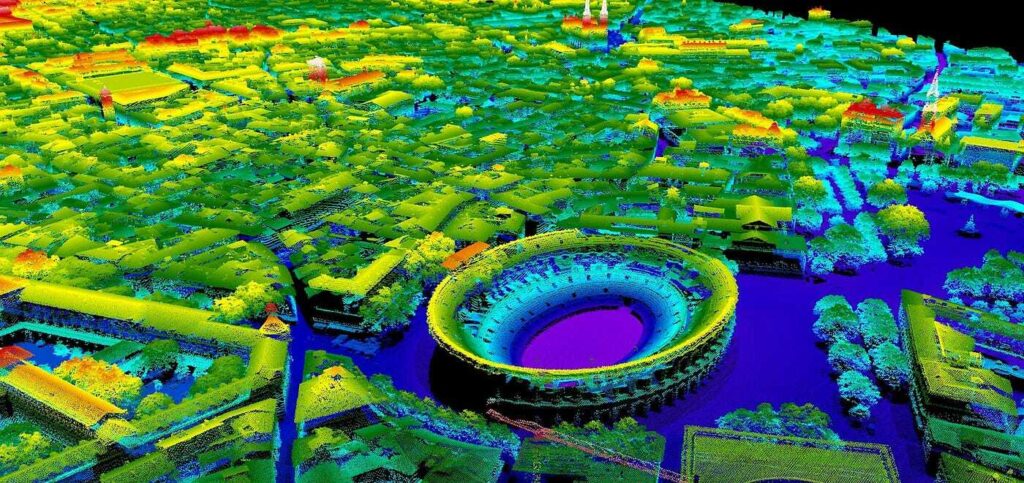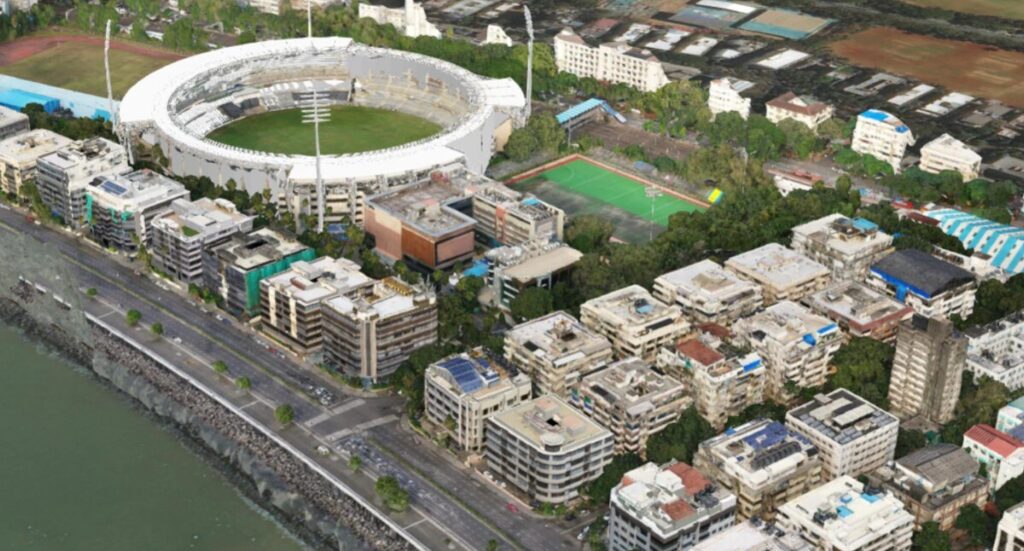Geospatial Digital Twins: Revolutionizing India's Infrastructure Future

India stands at a crucial crossroads, with its cities evolving at an unprecedented pace to accommodate the population and economic growth surge. However, the traditional urban development and management systems need to be equipped to handle the complexity of this transformation efficiently and sustainably. India urgently needs a digital overhaul to reimagine how its cities are planned, constructed, and operated. Geospatial digital twins offer a groundbreaking technological solution that can catapult Indian cities into a new era of preparedness for the future.
Understanding Geospatial Digital Twins

Digital twins are virtual replicas of physical assets or systems that continuously mirror their real-world counterparts through integrated data streams. Geospatial digital twins take this concept to the next level by creating digital replicas of entire cities or infrastructure networks. They use 3D models, IoT sensors, satellite imagery, and other data sources to generate a dynamic, real-time representation of these complex systems. This virtual city model unifies data from diverse sources, facilitating data-driven decision-making and strategic planning.
Prominent technology giants such as Microsoft, NVIDIA, and ESRI are pioneering the development of urban digital twins to address the intricate challenges of modern cities. For instance, Singapore has implemented the “Virtual Singapore” platform, offering a national digital twin that supports research, city planning, and citizen engagement. In India, nascent initiatives are emerging. Kerala recently launched a statewide digital twin modeled after Singapore’s platform, focusing on enhancing e-governance. Additionally, Tata Consultancy Services has partnered with Surat to develop digital twins for mobility, water, and waste management.
The Digital Imperatives for India’s Urban Future
As India urbanizes at an unprecedented rate, it is estimated that 814 million citizens will reside in cities by 2050. This monumental shift necessitates adopting new digital capabilities, and geospatial digital twins are uniquely positioned to meet India’s development requirements.
Optimal Urban Planning: Responsible urban growth requires systems that model complex future scenarios. Geospatial digital twins enable planners to visualize and simulate various development scenarios long before construction begins, facilitating data-driven decisions that balance liveability, sustainability, and economic considerations while minimizing disruptions.
Effective Project Delivery: Major infrastructure projects often require extensive coordination among government agencies, private developers, engineers, architects, and contractors. Digital twins provide a common data platform for design reviews, progress monitoring, approvals, and inspections, ensuring transparency and accountability throughout the project lifecycle.
Strategic Asset Management: Cities rely on extensive infrastructure networks, including roads, bridges, power grids, water treatment plants, and commercial buildings. Maintaining these assets is a significant challenge. Integrated with real-time sensor data, geospatial digital twins offer detailed visibility into asset conditions and performance, enabling preventive maintenance and prolonging asset lifespans.
Climate Resilience and Sustainability: With climate change accelerating, cities need the capability to model environmental risks and assess mitigation strategies. Geospatial digital twins allow for scenario analysis of environmental impact, ensuring climate resilience is integrated into long-term plans and facilitating measurement of sustainability key performance indicators.
Responsible Community Engagement: Digital twins promote urban innovation by providing interactive 3D environments for citizens, academia, and businesses to envision future scenarios collaboratively. This inclusive co-creation empowers communities to play an active role in responsibly shaping the city’s future.
Realizing India’s Spatial Digital Future
The Indian government has laid a strong foundation for embracing digital transformation through initiatives such as “Digital India.” The geospatial industry contributes approximately INR 20,000 crore to India’s economy and has benefited from recent policy shifts that have eased regulatory constraints. However, unlocking the full potential of geospatial digital twins requires strategic action:
Government Sandboxes: Encourage digital twin piloting and innovation through government-established sandboxes.
Tax Incentives: Provide tax incentives to encourage private sector investment in the geospatial digital twin ecosystem.
Public-Private Partnerships: Foster partnerships for technology knowledge transfer and capacity building.
Infrastructure Investments: Invest in essential infrastructure, including IoT networks, 3D modeling, and simulation technologies.
Digital Governance: Prioritize proactive digital governance, focusing on forward-looking cyber-physical integration.
Private Sector Initiatives: Encourage private companies to develop proof-of-concept projects demonstrating digital twins’ benefits.
Public Outreach and Education: Launch public outreach and upskilling programs to enhance digital twin literacy among various stakeholders.
While geospatial digital twins are still in their infancy in India, advances in cloud computing, artificial intelligence, the Internet of Things, and 3D modeling will drive rapid progress in the field over the next decade. The time is ripe for India to seize the opportunity to lead this revolution. Strategic investments in digital twin capabilities will yield substantial dividends, leading to more intelligent, sustainable, and resilient urban futures.
Inaction is not an option for India, as failing to embrace this technology could lead to inefficiencies that hinder urban development. With the right policies, funding, and political support, geospatial digital twins can fundamentally reshape how Indian cities are envisioned and experienced for future generations.
Digital Twins and India’s Economic Transformation

Adopting geospatial digital twins is not just about revolutionizing urban planning and development but also a pivotal driver in India’s economic transformation. Here are some critical aspects of how digital twins will reshape India’s economy:
Economic Growth: Geospatial digital twins can streamline the construction and management of urban infrastructure, reducing costs and delays. This efficiency will attract more investment and bolster economic growth.
Job Creation: Developing and maintaining digital twins will create job opportunities, ranging from data analysis to software development and system administration.
Innovation Hub: India has the potential to become an innovation hub for geospatial digital twins, attracting both domestic and international investments.
Export Potential: As the technology matures, Indian companies can export their expertise in geospatial digital twins to other countries, contributing to the nation’s export revenues.
Improved Quality of Life: Digital twins will result in better urban planning, leading to improved living conditions, which, in turn, can attract talent and investment.
Sustainable Development: The technology will help India pursue sustainable development goals, reducing environmental impact and conserving resources.
Digital Twin Strategy for Indian Infrastructure
A comprehensive digital twin strategy for Indian infrastructure involves several key steps:
Data Integration: Integrate data from various sources, such as satellite imagery, IoT sensors, and governmental databases, to create a holistic view of the infrastructure.
3D Modeling: Develop accurate and dynamic 3D models of cities and infrastructure networks to ensure a realistic representation.
Real-time Monitoring: Implement real-time monitoring through IoT sensors to gather data on asset conditions and performance.
Scenario Simulation: Develop the capability to simulate different development scenarios, enabling data-driven decision-making.
Community Engagement: Involve citizens, academia, and businesses in the digital twin ecosystem to promote responsible community engagement.
Investment in Technology: Invest in technology infrastructure, such as IoT networks and data analytics platforms, to support the digital twin ecosystem.
The Impact of Digital Twins on Indian Infrastructure

The adoption of digital twins by Indian infrastructure companies will have far-reaching effects:
Efficiency: Projects will be executed more efficiently, with reduced delays and cost overruns.
Transparency: Transparency and accountability will be enhanced, reducing the likelihood of corruption and malpractice.
Long-term Planning: Digital twins will enable long-term planning, ensuring infrastructure projects align with the nation’s developmental goals.
Sustainability: The technology will help integrate sustainability into infrastructure projects, reducing environmental impact.
Competitiveness: Indian infrastructure companies adopting digital twins will be more competitive globally.
Why Infrastructure Companies Should Adopt Digital Twin Strategies
There are compelling reasons for Indian infrastructure companies to adopt digital twin strategies:
Efficiency and Cost Savings: Digital twins streamline project execution, reducing delays and cost overruns.
Competitive Advantage: Companies that embrace this technology will have a competitive edge in an increasingly technology-driven industry.
Sustainability: Digital twins enable the integration of sustainability into infrastructure projects, which is crucial for long-term viability.
Transparency and Accountability: Digital twins enhance transparency and accountability, reducing the risk of legal and ethical issues.
Improved Asset Management: For companies responsible for managing infrastructure assets, digital twins offer a powerful tool for maintenance and performance optimization.
GeoSmart India 2023: Digital Twin Strategy for Indian Infrastructure
The third plenary session at GeoSmart India 2023 delved into the critical topic of the Digital Twin Strategy for Indian Infrastructure. This event brought together industry experts, policymakers, and technology leaders to discuss the potential and challenges of implementing digital twins in India. Prominent discussions included the need for a collaborative approach involving the public and private sectors, policy reforms to encourage investment, and the significance of upskilling the workforce to adapt to this cutting-edge technology.
Looking to the Future
The future is bright for India’s urban development with the adoption of geospatial digital twins. As technology advances rapidly, this transformative tool will become integral to planning, building, and managing infrastructure. With proactive policies and strategic investments, India can reshape its urban landscape for a sustainable and economically prosperous future.
In conclusion, geospatial digital twins are a technological novelty and a fundamental tool for India’s economic transformation and sustainable urban development. It’s time for India to seize this opportunity and pave the way for a brighter, more efficient, sustainable urban future. By embracing digital twins, India can transform its cities into beacons of innovation, resilience, and prosperity.










